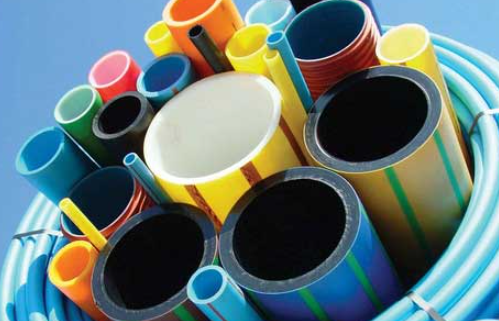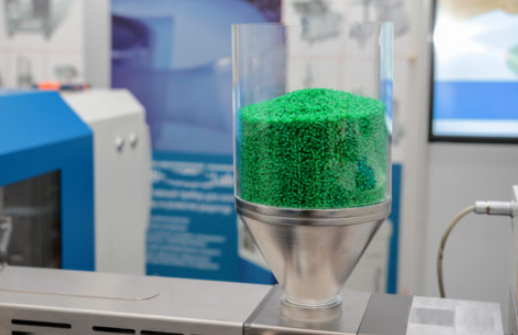The speed of plastic extrusion varies widely based on material properties, machine configuration, and operational conditions, impacting quality, cost-efficiency, and production capacity significantly.

Factors Affecting the Speed of Plastic Extrusion
Material Properties
The properties of the plastic material being extruded play a crucial role in determining the extrusion speed. These properties include:
- Melt Flow Index (MFI): The melt flow index is a measure of how easily the plastic flows when heated. A higher MFI means the material will flow through the extruder more easily, potentially increasing the extrusion speed.
- Viscosity: The viscosity of the plastic material affects how it behaves under pressure and heat, impacting the speed at which it can be extruded.
- Thermal Stability: Materials with better thermal stability can withstand higher extrusion temperatures, which can increase the extrusion speed.
- Additives: The presence of additives can alter the behavior of the plastic during extrusion, affecting the extrusion speed.
Machine Configuration
The configuration of the extrusion machine is another critical factor influencing the extrusion speed. Key machine configuration aspects include:
- Screw Design: The design of the screw, particularly its length and diameter, impacts the amount of material that can be processed per unit of time.
- Motor Power: The power of the motor determines how fast the screw can rotate, impacting the extrusion speed.
- Barrel Design: The design of the barrel, including its heating and cooling systems, affects the temperature control during extrusion, impacting the extrusion speed.
Temperature and Pressure Conditions
The conditions under which extrusion occurs, particularly the temperature and pressure, are critical in determining the extrusion speed. Key points include:
- Heating Temperature: Higher temperatures can reduce the viscosity of the plastic material, potentially increasing the extrusion speed. However, excessive temperatures can degrade the material quality.
- Cooling Systems: Efficient cooling systems can help in maintaining the desired material properties while achieving higher extrusion speeds.
- Pressure: The pressure at which the material is fed through the die affects the extrusion speed. Higher pressures can increase the speed, but also the power consumption and operational costs.
Die Design
The design of the die used in the extrusion process affects how efficiently and quickly the plastic material can be shaped and extruded. Important factors include:
- Die Geometry: The geometry of the die affects the flow of material and the resultant extrusion speed.
- Die Materials: The material of the die affects its thermal conductivity and wear resistance, impacting the extrusion speed.
- Die Maintenance: Regular maintenance ensures the die remains in good condition, which is essential for maintaining a steady extrusion speed without compromising on the quality of the final product.
Measuring the Speed of Plastic Extrusion
Methods and Instruments
Measuring the speed of plastic extrusion is pivotal for ensuring the efficiency and quality of the production process.
- Rotational Speed Measurement: By measuring the rotational speed of the screw, one can estimate the extrusion speed.
- Throughput Measurement: Throughput measurement involves calculating the amount of material being extruded per unit of time. Instruments like weigh belts or loss-in-weight feeders can provide accurate throughput measurements.
- Laser Speed Measurement: Laser instruments can measure the speed of the extrudate as it exits the die. These instruments are non-contact and provide precise speed measurements.
- Ultrasonic Measurement: Ultrasonic sensors can be used to measure the speed of the extrudate by calculating the time it takes for an ultrasonic wave to travel through the material.
- Encoders: Encoders can be attached to various moving parts of the extrusion machine to measure their speed, which can then be correlated to the extrusion speed.
Standards and Benchmarks
Adhering to industry standards and benchmarks is crucial for ensuring that the measurement of extrusion speed is accurate and comparable across different setups. Key standards include:
- ASTM Standards: The American Society for Testing and Materials provides various standards related to plastic extrusion, including methods for measuring extrusion speed.
- ISO Standards: The International Organization for Standardization also offers standards for measuring the speed of plastic extrusion to ensure consistency and accuracy across different measurements.
- Industry Benchmarks: Various industry benchmarks exist to provide a basis for comparing extrusion speeds among different operations.
Implications of Extrusion Speed
Quality Control
The speed of extrusion is a critical factor that directly impacts the quality of the final product. Here are several aspects of how extrusion speed affects quality control:
- Surface Finish: At higher extrusion speeds, the material may not have enough time to conform to the die shape, which can result in a poor surface finish. Conversely, a controlled, slower extrusion speed can lead to a smoother surface finish.
- Material Consistency: The consistency of the material could be affected if the extrusion speed is too high, as it might lead to uneven melting or mixing of the plastic material.
- Dimensional Accuracy: Accurate control of extrusion speed is vital for maintaining dimensional accuracy in the final product. Too fast or too slow a speed can result in products that are out of specification.
- Defect Reduction: A well-optimized extrusion speed can significantly reduce the occurrence of defects such as warping, bubbles, or voids in the final product.
Cost Efficiency
Extrusion speed also has a significant impact on the cost-efficiency of the manufacturing process. Here’s how:
- Throughput: Higher extrusion speeds can increase throughput, thus reducing the cost per unit of product.
- Energy Consumption: The energy consumption can be higher at increased extrusion speeds due to the need for more heating or higher screw speeds. Conversely, slower extrusion speeds might reduce energy costs but could decrease throughput.
- Maintenance Costs: Operating at high extrusion speeds can lead to increased wear and tear on the machinery, resulting in higher maintenance costs over time.
- Material Waste: An optimized extrusion speed can help in reducing material waste, which in turn contributes to cost efficiency.
Production Capacity
Extrusion speed is a primary determinant of the production capacity of an extrusion line. Here are some points regarding its impact:
- Output Rate: A higher extrusion speed will naturally result in a higher output rate, increasing the production capacity of a manufacturing facility.
- Lead Times: Faster extrusion speeds can reduce lead times, enabling quicker delivery to customers and improved responsiveness to market demands.
- Scalability: Having the ability to adjust extrusion speeds allows for better scalability in response to varying demand levels.
- Equipment Utilization: Efficiently managing extrusion speeds can lead to better utilization of equipment, potentially freeing up capacity for other production activities.
Optimizing the Speed of Plastic Extrusion
Technological Advancements
Harnessing the power of modern technology can significantly contribute to optimizing the speed of plastic extrusion. Here are some of the technological advancements that play a role:
- Computer-Aided Design (CAD): Utilizing CAD software can help in designing dies with optimal geometries to enhance the flow of plastic material, thus improving extrusion speed.
- Automation and Control Systems: Advanced automation and control systems enable real-time monitoring and adjustment of extrusion parameters, facilitating optimized extrusion speeds.
- High-Efficiency Motors: Modern high-efficiency motors can deliver the required power while minimizing energy consumption, which is vital for optimizing extrusion speed.
- Improved Material Formulations: Advanced material formulations can provide better flow characteristics and thermal stability, allowing for higher extrusion speeds without compromising quality.
Best Practices in Speed Optimization
Adhering to best practices is essential for achieving optimized extrusion speeds. Some of the best practices include:
- Regular Maintenance: Ensuring that the extrusion equipment is well-maintained helps in preventing breakdowns and maintaining a consistent extrusion speed.
- Process Monitoring: Continual monitoring of the extrusion process helps in identifying and rectifying issues that could be hampering extrusion speed.
- Employee Training: Training the operators to understand the implications of extrusion speed and how to adjust it for optimal performance is crucial.
- Quality Control: Implementing stringent quality control procedures ensures that the extrusion speed is set at a level that guarantees the desired quality of the final product.
- Energy Management: Efficient energy management practices can help in reducing the operational costs associated with varying extrusion speeds.

Case Studies on Extrusion Speed
Industry Applications
Case studies focusing on the application of optimized extrusion speed in various industries provide valuable insights into the practical benefits and challenges encountered. Here’s an overview of some industry applications:
- Packaging Industry: In the packaging industry, optimizing extrusion speed is critical for meeting high-volume demands while ensuring the quality and consistency of packaging materials. A case study might explore how a particular company achieved a balance between speed, quality, and cost-efficiency through technological advancements or process improvements.
- Construction Industry: The construction industry relies on plastic extrusion for the production of various building materials. A case study might delve into how optimized extrusion speed contributed to meeting project deadlines and reducing costs in a large construction project.
- Automotive Industry: The automotive industry utilizes plastic extrusion in the production of various components. A case study may highlight how a particular automotive manufacturer optimized extrusion speed to improve production efficiency and meet stringent quality standards.
Lessons Learned
Examining the lessons learned from these case studies can help other organizations better understand the implications of extrusion speed and how to optimize it for improved performance. Key lessons might include:
- Technology Adoption: The importance of adopting modern technologies to achieve better control over extrusion speed and improve overall process efficiency.
- Process Optimization: The value of continual process optimization to identify and address factors limiting the achievement of desired extrusion speeds.
- Quality Assurance: The critical role of quality assurance in ensuring that increased extrusion speeds do not compromise product quality.
- Cost Management: Insights into effective cost management strategies to ensure that efforts to optimize extrusion speed translate into better cost-efficiency and profitability.
- Workforce Training: The necessity of adequate training for operators and technicians to effectively manage extrusion speed and ensure optimal performance.




